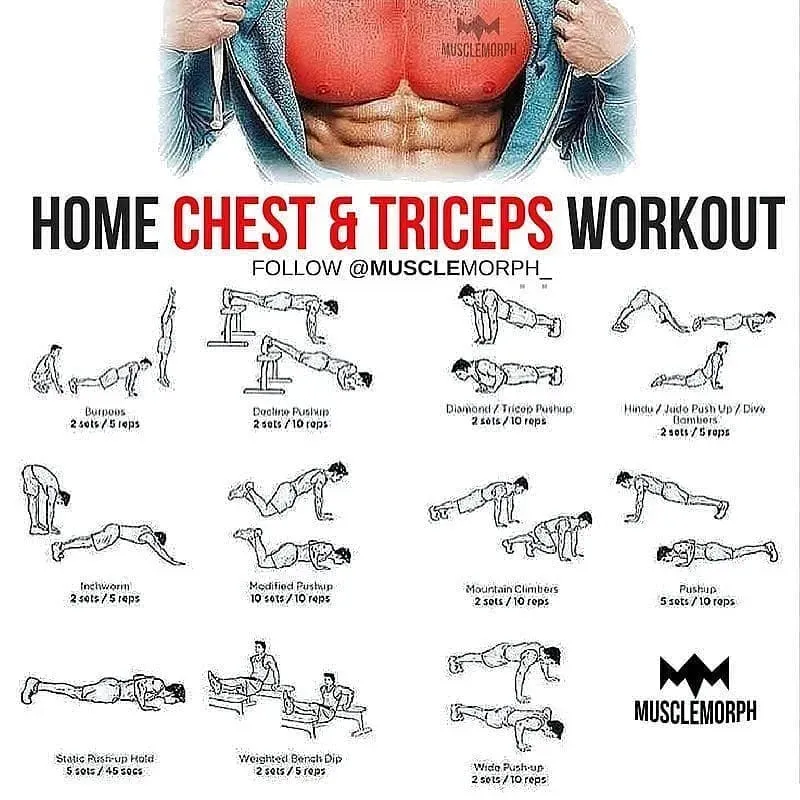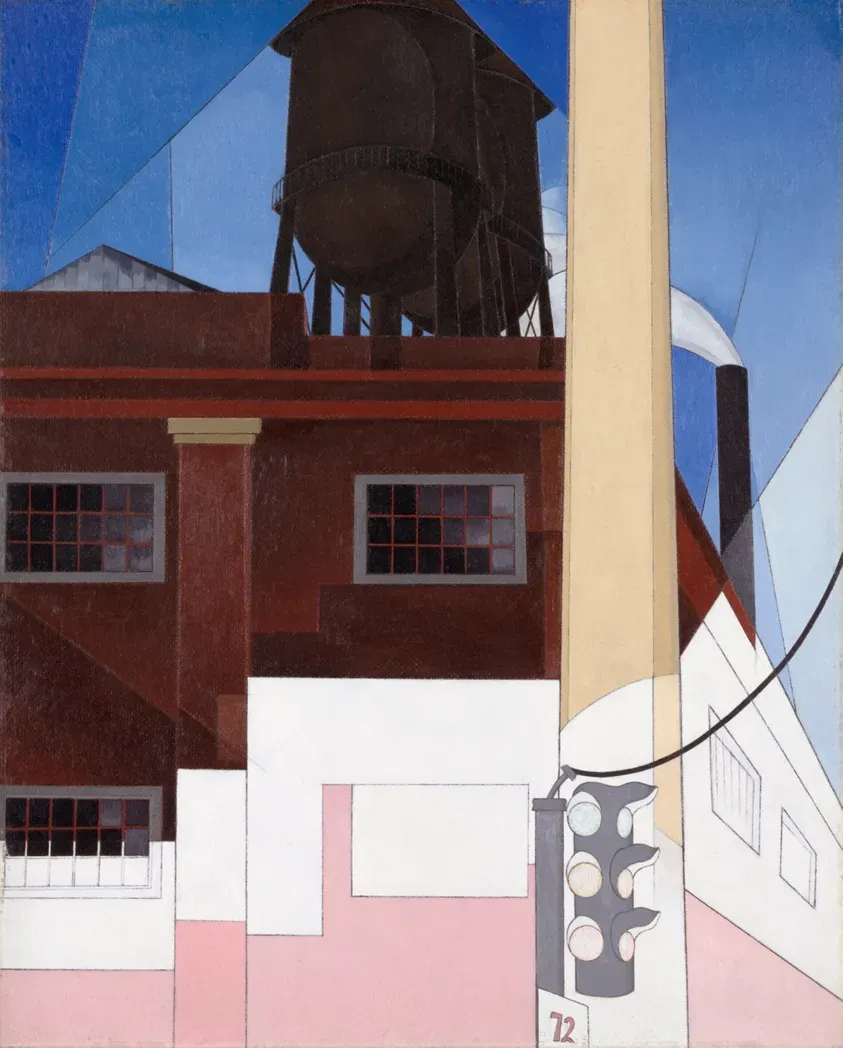Table of Contents
Let's be honest. Who doesn't want a solid chest? That feeling of power, the way clothes fit better – it's a common goal. But maybe hitting the crowded gym isn't your scene, or life just gets in the way. You've probably seen countless clips promising results, maybe even searched for a "chest workout at home video" hoping to find that magic bullet.
Starting Your Chest Workout at Home Journey

Starting Your Chest Workout at Home Journey
Finding Your Starting Point
Alright, so you're ready to tackle that chest from the comfort of your own space. No more waiting for the bench press, no awkward gym selfies (unless that's your thing, no judgment). The cool part about starting a chest workout at home journey is how accessible it is. You don't need fancy machines or a stack of weights. Your own body is the primary tool here, and it's surprisingly effective when you know how to use it. Think of it as building a foundation from the ground up, literally, with push-ups and their many variations.
Setting Realistic Expectations
Now, let's keep it real. You won't get a competition-ready physique overnight by watching one chest workout at home video. Building muscle takes time and consistency. What you *will* get, pretty quickly actually, is improved strength, better muscle control, and a noticeable pump if you're doing it right. The key is committing to the process, understanding the movements, and progressively challenging yourself. It's less about brute force and more about smart, consistent effort.
So, before you even drop down for that first push-up, let's nail down the absolute essentials:
- Find a clear space. You need room to move without kicking the coffee table.
- Wear comfortable clothes. Anything that lets you move freely works.
- Hydrate. Keep water nearby.
- Have a plan. Randomly doing exercises won't cut it. We'll get to that plan.
- Listen to your body. Pushing hard is good, pushing through sharp pain is stupid.
Phase 1: Building Endurance with AtHome Chest Exercises

Phase 1: Building Endurance with AtHome Chest Exercises
Setting the Endurance Foundation
so you've got your space cleared and you're ready to start building. This first phase, let's call it the groundwork, is all about endurance. Think of it like teaching your chest muscles to work for longer periods without burning out immediately. This isn't the phase where you're trying to max out your one-rep push-up record. Instead, you're focusing on controlled movements and building volume. It's crucial because it prepares your muscles and joints for the heavier lifting (or heavier bodyweight stress) that comes next. Skipping this step is like trying to sprint before you can walk – you're just asking for trouble.
When I first started messing around with bodyweight stuff, I just did as many push-ups as I could until my face hit the floor. Not smart. This phase is way more strategic. You're aiming for higher rep ranges, focusing on completing sets with good form even when you start feeling tired. It's about building that work capacity.
Here are some core principles for this initial endurance phase:
- Focus on Form First: Quality over quantity, always.
- Aim for Higher Reps: Think 15-25+ reps per set.
- Control the Movement: Don't just drop and bounce. Lower yourself slowly, press up powerfully but controlled.
- Short Rest Periods: Keep rest between sets relatively brief, say 60-90 seconds.
- Listen to Fatigue: If your form breaks down, stop the set.
Your Go-To Endurance Moves
For your chest workout at home video inspiration during this phase, keep it simple. The standard push-up is king, but don't be afraid to modify. If full push-ups on your toes are too tough for 15+ reps with good form, drop to your knees. Seriously, there's zero shame in knee push-ups. They still work your chest, shoulders, and triceps effectively while allowing you to build the necessary strength and endurance before progressing. You can also use an elevated surface like a sturdy chair or counter for incline push-ups, which makes the movement easier and targets the lower chest slightly differently.
The goal here is to comfortably hit those higher rep ranges for multiple sets. If you can do three sets of 20 knee push-ups with solid form, that's fantastic progress and exactly what this phase is for. Once you can do three sets of 20-25 full push-ups on your toes, you know you're ready to start thinking about adding more resistance or moving to more challenging variations in the next phase.
Consistency and Progression in Phase 1
Stick with this endurance focus for about two to three weeks. Three workout days a week is a good target, with at least one full rest day in between. This gives your muscles time to recover and rebuild. Don't get impatient; this phase is critical. As you get stronger within these couple of weeks, try to increase the number of reps you do in each set, or add an extra set. If knee push-ups become easy, start integrating some sets of full push-ups, even if you can only do a few at first. The progression should feel gradual, not like jumping off a cliff.
Track your progress. Jot down how many reps you did for each set. This isn't just busywork; it shows you tangible improvement and helps you know when you're ready to move on. Seeing those numbers climb is seriously motivating. Remember, laying this solid endurance base makes the strength and power phases much more effective and safer.
Phase 2: Boosting Strength in Your Home Chest Workout
Transitioning from Endurance to Raw Power
you've put in the time building that endurance base. You can crank out reps like nobody's business without feeling like your chest is going to explode after five. Now it's time to shift gears. Phase 2 is all about getting strong. This isn't just about looking good; it's about building functional power. We're moving away from high-volume, lower-intensity work to lower reps and higher intensity. Think quality over sheer quantity. This is where the real muscle-building stimulus happens.
How do you make bodyweight exercises *harder* without adding weights? You manipulate leverage, stability, and time under tension. A standard push-up might be easy for 20 reps now, but elevate your feet and suddenly 10 feels like a battle. Or slow down the lowering portion (the eccentric phase) to a snail's pace. These adjustments force your muscles to work harder, recruit more fibers, and ultimately get stronger. This phase requires more focus on each individual repetition.
What does "strength" look like in a home chest workout? It means:
- Lower Rep Ranges: Aim for 6-12 reps per set.
- Increased Intensity: Each rep should be challenging, especially the last few.
- Longer Rest Periods: Allow 2-3 minutes between sets for better recovery.
- Focus on Progressive Overload: Consistently make the exercise harder over time.
Applying Resistance with Bodyweight Variations
To really boost strength in your home chest workout, you need variations that provide more resistance than a standard floor push-up. Decline push-ups, where your feet are higher than your hands (use a chair, couch, or stairs), shift more bodyweight onto your upper body, making the movement significantly tougher and hitting the upper chest fibers more intensely. Archer push-ups, where you lower towards one hand while keeping the other arm extended, are another brutal option that builds incredible unilateral strength.
If you're feeling particularly ambitious and have the stability, try pseudo planche push-ups. These involve positioning your hands lower down your torso and leaning your weight forward over your hands. It's a small adjustment with a massive impact on difficulty. Remember, the goal is to find variations where you can perform sets of 6-12 reps with good form. Don't jump straight to one-arm push-ups unless you can already do a solid 20+ regular push-ups. Progression is key here; challenge yourself, but don't be reckless.
Phase 3: Adding Explosiveness to Your AtHome Chest Routine

Phase 3: Adding Explosiveness to Your AtHome Chest Routine
Why Explosiveness Matters After Building Strength
Alright, you've built the endurance base, you've packed on some serious strength with those tougher variations. What's next? Power. Think about pushing something heavy, not just lifting it slowly, but *launching* it. That's explosiveness. It's the ability to generate maximum force quickly. For your chest, this means not just pressing weight (or your body) up, but doing it with speed and power. This phase is less about grinding out reps and more about sharp, powerful bursts of energy. It makes your muscles more responsive, improves athletic performance, and honestly, it just feels cool to be able to push off the ground with force.
You wouldn't train for a sprint by only jogging, right? Same principle here. Once you have the underlying strength, you need to teach your muscles to fire rapidly. This is where you start bridging the gap between pure strength and dynamic movement. It's a different kind of challenge compared to the slow, controlled reps of Phase 2. It requires more focus on the *speed* of contraction.
What are we aiming for in this explosive phase?
- Rapid Force Generation: Pushing off the ground quickly.
- Plyometric Movements: Exercises that involve a stretch-shortening cycle.
- Lower Reps, Higher Intensity: Focus on quality and speed over volume.
- Adequate Rest: Crucial for allowing your nervous system to recover.
Introducing Plyometric Push-Up Variations
When you think "chest workout at home video" for explosiveness, you're probably picturing something dramatic. And you're not far off. The cornerstone of this phase is the plyometric push-up. The simplest version is the clap push-up. You lower yourself like a standard push-up, but on the way up, you push *hard* enough to get your hands off the ground and clap them together before landing back down. It sounds simple, and maybe you'll land on your face the first few times, but that's part of the learning curve. Start by just trying to get your hands an inch off the ground. Progress to getting higher, then to claps, behind-the-back claps (if you're feeling brave), or even chest taps.
Another variation is the elevated plyo push-up. Place your hands on two sturdy boxes or steps slightly wider than shoulder-width. Lower yourself, then explode up and inwards, landing with your hands on the floor between the boxes. Then immediately push back up and outwards to land back on the boxes. This adds an extra dimension of lateral movement and power.
How do these variations change things?
Exercise Type | Focus | Rep Range |
|---|---|---|
Standard Push-up | Endurance/Basic Strength | 15-25+ |
Decline Push-up | Strength (Upper Chest) | 6-12 |
Plyometric Push-up | Explosiveness/Power | As many *quality* reps as possible (often 5-10) |
Integrating Explosiveness and Staying Safe
Adding explosive movements like plyometric push-ups shouldn't replace your strength work entirely, but rather complement it. You might dedicate one workout day a week specifically to power, or integrate explosive sets *after* your strength sets. Since these movements are higher impact and taxing on the nervous system, quality is king. Focus on performing each rep with maximum speed and force. If your reps start looking sluggish or your landings get sloppy, stop the set. Pushing through fatigue here is a fast track to injury.
Warm-up extensively before attempting plyometrics. Your muscles and joints need to be ready for the sudden impact. Jumping jacks, arm circles, light push-ups – get everything warm and mobile. And give yourself plenty of rest between sets, perhaps 2-3 minutes or even more, to ensure you can give maximum effort on every single rep. This phase is about quality bursts, not conditioning. Stick to this for several weeks, focusing on increasing the height of your push-off or the complexity of the movement (like adding claps), ensuring you maintain control and land softly.
Mix It Up: Variations and Consistency for Your Chest Workout at Home

Mix It Up: Variations and Consistency for Your Chest Workout at Home
Why Sticking to the Same Routine Kills Progress (and Motivation)
Look, doing the same three push-up variations day in and day out gets old. Fast. Your muscles are smart; they adapt. Once they figure out how to efficiently do standard push-ups, decline push-ups, and maybe diamond push-ups, the stimulus for growth and strength gains starts to drop off. This is where mixing it up becomes non-negotiable for your chest workout at home video routine. Variety isn't just the spice of life; it's the key to continuous progress. Different hand placements, different angles, different tempos – they all hit the muscle fibers in slightly different ways, forcing your body to keep adapting. Think about wide push-ups for the outer chest, close-grip for triceps and inner chest, or even staggered hand positions.
Beyond just muscle adaptation, let's talk boredom. If your workout feels like a chore you're dreading, you're far less likely to actually do it. Introducing new movements or putting familiar ones together in different ways keeps things fresh. It challenges your coordination and mental focus, not just your muscles. Ever tried doing push-ups with one hand on a basketball? It's humbling, effective, and breaks the monotony.
Consistency Trumps Hero Workouts Every Time
You can watch every chest workout at home video on the internet, learn a hundred variations, but if you're not showing up consistently, it's mostly noise. One epic, muscle-shredding session followed by five days of doing nothing gets you nowhere slowly. Building a strong chest at home is a marathon, not a sprint. It's the cumulative effect of showing up, putting in the work even when you don't feel like it, and letting your body recover. Aim for 3-4 quality workouts per week, spread out to allow for rest.
Life happens, sure. Some days you might only have 15 minutes. That's fine. A short, intense session is infinitely better than skipping it entirely. The goal is to build a habit. Make it part of your routine, like brushing your teeth or scrolling through social media. Consistency builds momentum, and momentum is a powerful force in fitness. It’s the difference between seeing gradual, sustainable progress and bouncing between periods of intense effort and total inactivity.
To keep things effective and engaging:
- Explore new push-up variations (pseudo planche, archer, dive bomber).
- Use household items for elevation or instability (chairs, stacks of books, towels).
- Experiment with tempo (slow negatives, pause reps).
- Combine phases (e.g., strength sets followed by explosive sets).
- Track your workouts to see progress and identify plateaus.
- Schedule your workouts like important appointments.
Keeping Your Home Chest Gains Going
So, we've covered the path from building basic endurance to adding serious strength and even a bit of explosive power, all without leaving your house. It wasn't about finding one perfect chest workout at home video, but about following a progressive plan. Building a stronger chest takes consistent effort, smart exercise selection, and allowing your body time to recover. The phases we discussed provide a roadmap, but the real work comes in showing up, pushing yourself safely, and adjusting as you get fitter. Keep these principles in mind, stay consistent, and you'll see progress. It's a marathon, not a sprint, but the results are built one rep at a time in your own space.
